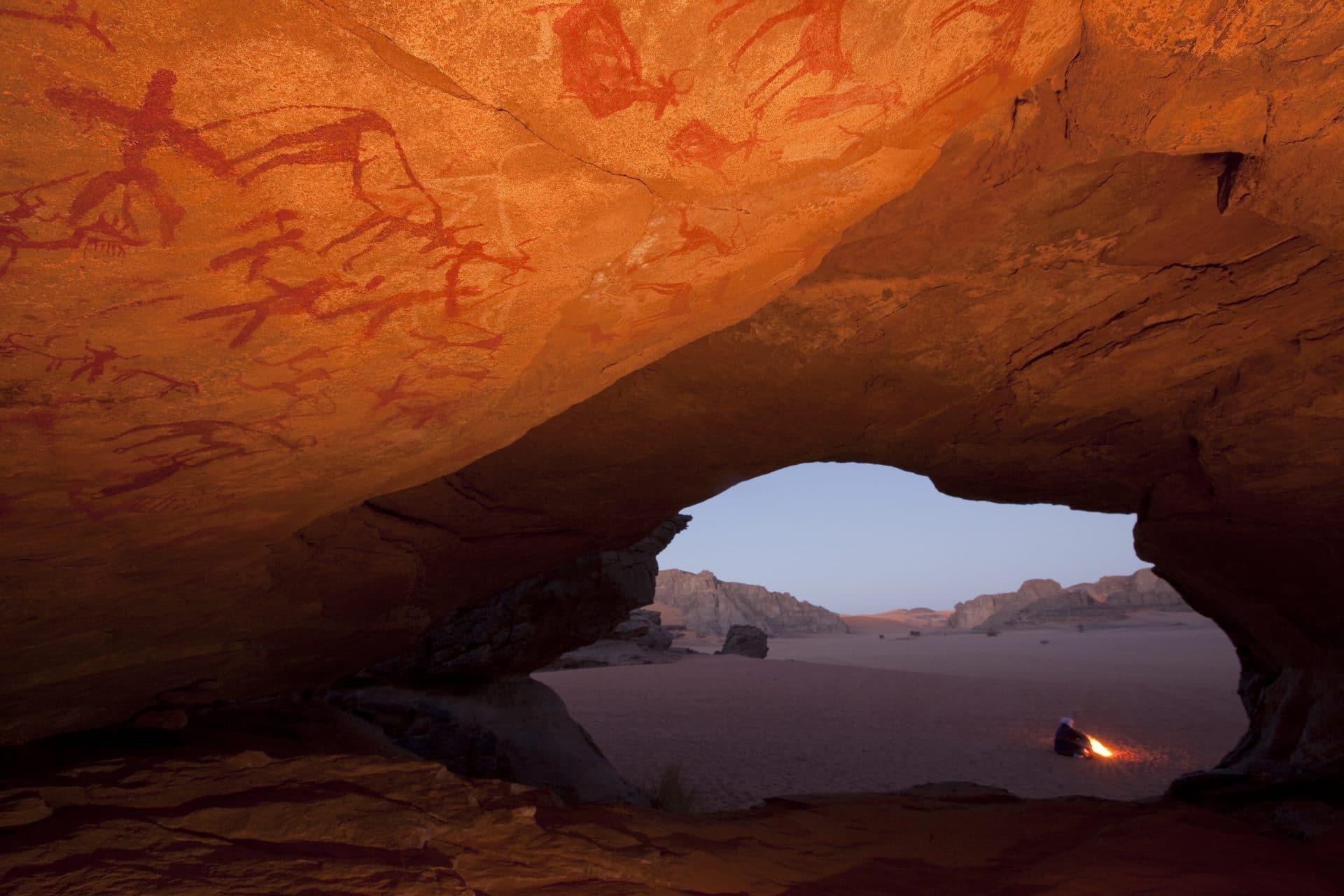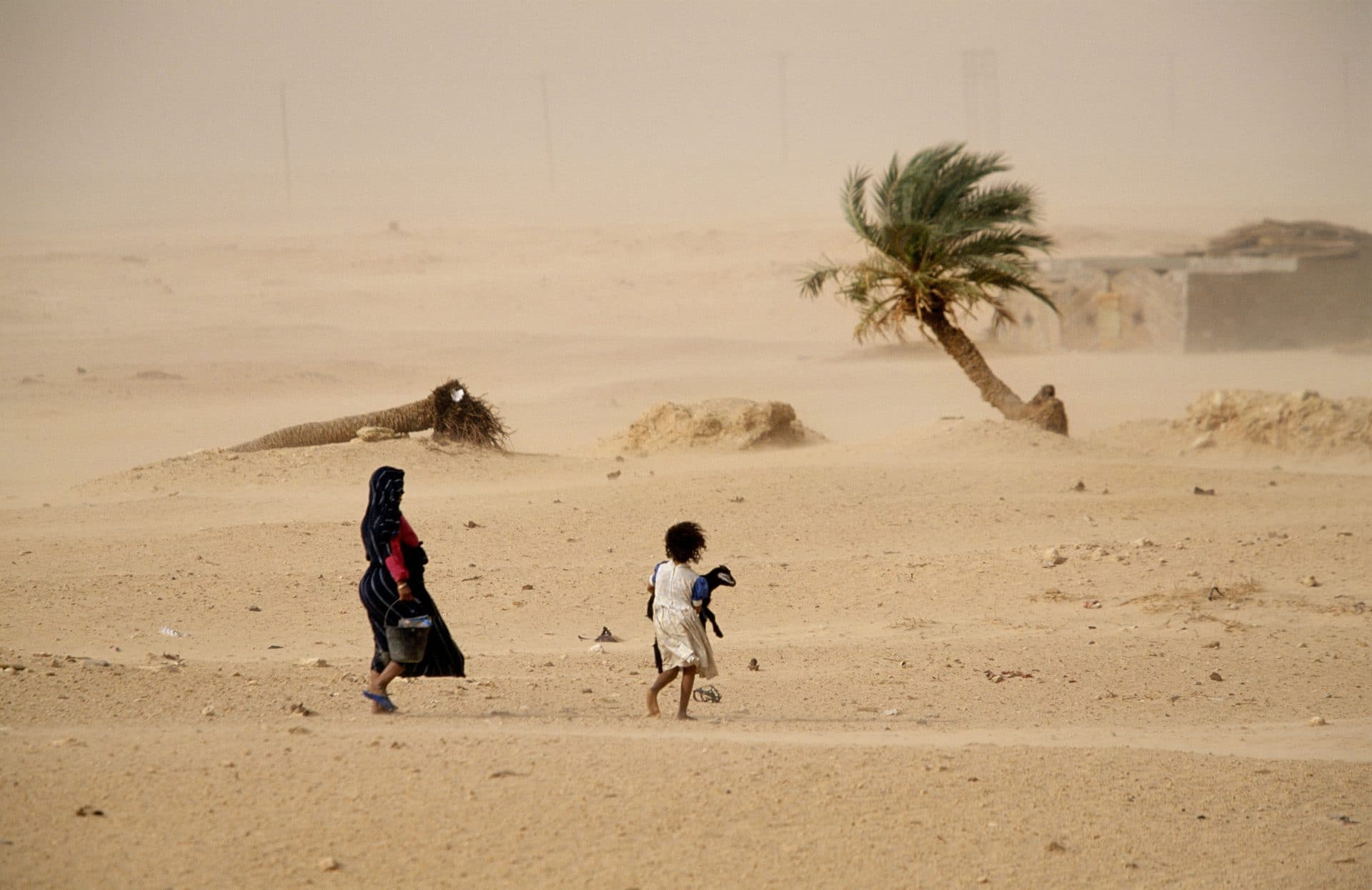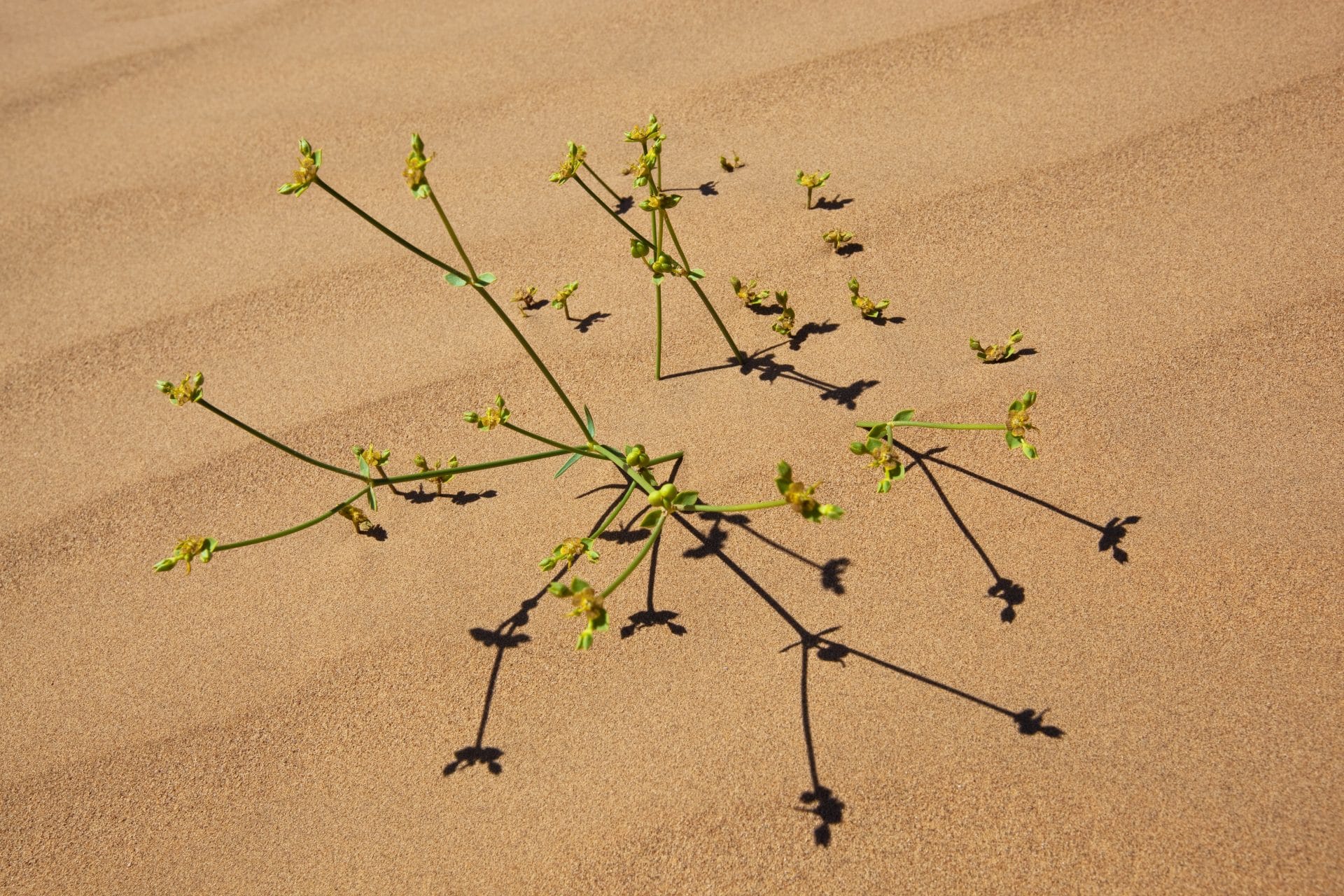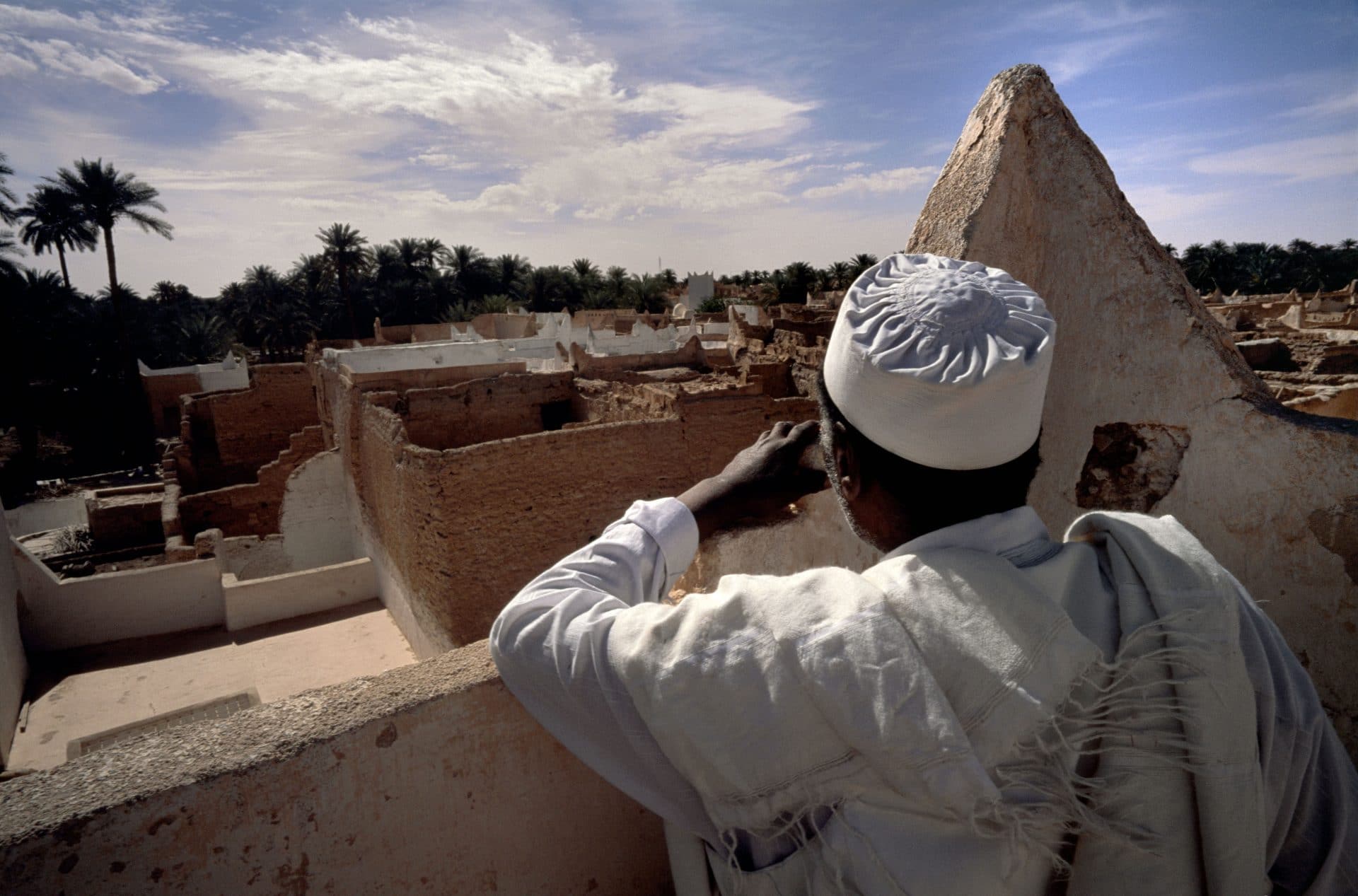
Red Ochre prehistoric cave paintings decorate the entry of the Cattle Cave in Wadi El Beridj: cows, camels, one cameleer, eleven human figures, some of which are holding sticks. An example of the rock art, dating from 10,000 B.C. to the first Century A.D., found in the caves of Tassili n’Ajjer, where unknown artists tell the story of humanity’s origins. This mountain range has in fact been an historical crossroads of ancient populations, ideally placed at the centre of the Sahara, between Niger, Libya and Algeria.

A mother and a daughter, holding a little lamb, brave a sand storm on their way home. The strength of the wind, which meets no obstacles due to the lack of plantations in farmland evidently in disarray, has just uprooted one of the last remaining date palm trees.

Euphorbia Guyoniana, spontaneous desert vegetation on the dunes of Erg Lihoudi, an example of flora that includes ephemeral, annual and perennial species. Many of these are perfectly suited to arid conditions, while others with a very short life-span, are dependent on the occasional rainfall.

Looking out from the open-air roof-terrace of a building in the old town, a man surveys the labyrinth of 111 buildings in rammed earth and stone, forming the ancient medina. Terraces – which in the Sahara work as roofs and are tightly connected – are still used for open-air sleeping on summer nights. In the past, the terraces that easily connect different neighbourhoods, also functioned as paths which were traditionally reserved for women, so they could move freely across town far from the gaze of men. Secret itineraries, providing the wooden frame for covered passageways that punctuate the old town, are used as community gathering places even today.